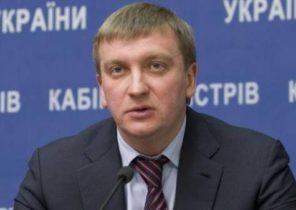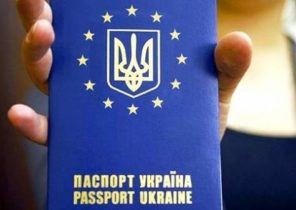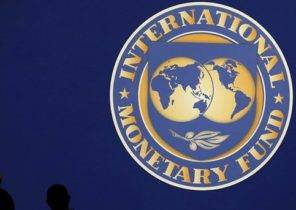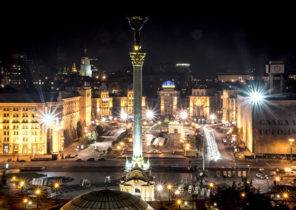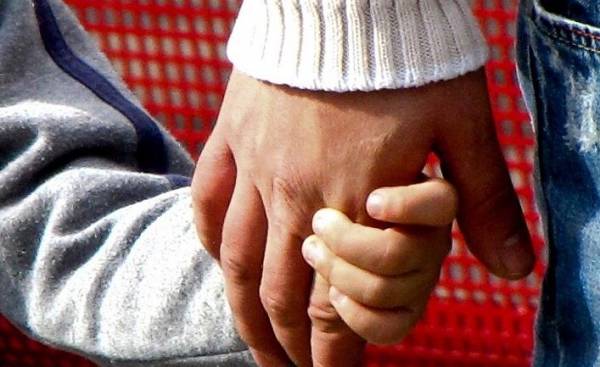
The controversy about the meeting with the members of the election campaign trump Russian officials continues to grow. However, one aspect of the story may seem strange to people who don’t follow Russian politics — it is about the fact that the Central theme of this meeting was adoption.
According to data published Monday by the Washington Post, President trump “personally dictated” the text of the statement in which his son Donald trump Junior said that the meeting in June 2016 were mostly dedicated to the “adoption” Russian kids”, however, this statement was questioned after the publication of emails about this meeting.
Even if the issue of adoption was discussed at this meeting, it probably seemed like a niche topic from the point of view of its use in the presidential campaign, however, actually, it is in the center of a geopolitical storm that formed after the end of the cold war — and this is the question that was used by the Russian government in response to the introduction of us sanctions.
The United States is uniquely involved in the history of international adoption, since this nation since the Americans began to take to their homes the European orphans after the First world war — has long been the place that most international adoptions. However, this particular story began about 25 years ago, after the collapse of the Soviet Union.
After the end of the cold war opened a new way for Americans wanting to adopt children. Since June 1991, without the help of the newspaper Los Angeles Times, Americans had the opportunity to adopt children from Russia — first it was the children who had certain shortcomings. Russia has become a particularly popular destination for those who desired to adopt children of Americans because in the same year, Romania has stopped international adoptions (as reported then Time magazine, in the fall of the dictatorial regime of Ceausescu showed “inventories” in the thousands of orphans that has led to this wave of adoptions, however, this wave was quickly followed by reports of abduction of children and selling them on the black market). The experts noted the existence of racial dynamics, as the former Soviet republics began to provide the chance of facing infertility Americans adopt a white child.
At that time, against the background of serious problems in the Russian economy and a thaw in relations between the two Nations, the adoption of Russian children by American families was presented in the American media as a complex, but not devoid of the enjoyable aspects of the case, although Russian officials had already expressed concerns about possible abuse, and related scandals. However, since the beginning of 2000-ies the stories of Russian adoptions has changed. For example, in 2010, this topic has received unfavorable when a woman from Tennessee, she adopted a child in Russia, but then found it more difficult than she had expected — sent 7-year-old boy to Moscow with a note stating that she “no longer wishes to parent this boy.”
While many American families still hoping to adopt children from Russia, this well-publicized case helped to draw attention to unpleasant facts. According to research conducted by Time magazine in 2010 estimated that about 58 of thousands of Russian orphans of school age were adopted by Americans after the cold war, however, “in many cases, these children were suffering from the effects of improper care of orphans, as well as from injuries inflicted by their biological parents or other orphans.” The Russian orphans was noted a disproportionately high level of fetal alcohol syndrome in comparison with children from other countries, and the existing rules designed to give parents more chances to home adaptation, sometimes led to the fact that children spent more time in special institutions.
Medical information regarding such adopted children could be sketchy or inaccurate — and, on the other hand, American parents wishing to adopt children, plunged into the process with blinders on the eyes. While the relationship between these two Nations there were many happy stories about children and their families, the situation had all the signs of disaster. At the moment, Time magazine reported that the incident cast a shadow over all adoptions of Russian children by Americans, and some officials demanded a total ban of this practice.
“Although Russia has been a popular destination since the mid 1990-ies to hoping for the adoption of the Americans, the Russian government recently supported the internal adoption, — emphasized in the publication of Time magazine. — A small number of well-publicized cases of abuse involving American adoptive parents, probably, became the reason of such approach. The number of adoptions of Russian children by Americans has decreased by two-thirds in the period from 2004 to 2009”.
In December 2012 Vladimir Putin signed a law banning American families to adopt children from Russia, and stopped the works that were at that time in the process of implementation. Although the law called Dima Yakovlev Law (named after the adopted child of the deceased due to the fact that the adoptive father left him alone in a closed car), many observers saw him as the answer is not on the death of the boy, and us law — the Magnitsky Act, which, at first glance, had nothing to do with children. Based on this adopted the 2012 law, named for Russian lawyer, the circumstances of whose death is still shrouded in mystery, were imposed a number of sanctions against Russian citizens in connection with human rights violations.
The Dima Yakovlev law came just a few weeks after the signing of the Magnitsky Act, and is a temporary coincidence attracted a lot of attention.
While Russian law on adoption was purely political dimension, it was also only part of a more significant change in attitudes towards adoption in various countries. As reported in the 2013 Time magazine on the background of a significant reduction in international adoptions, “the number of foreign children adopted by American families has declined by about 60% since its peak in 2004. In that year the Americans, according to the state Department, 22991 adopted a foreign child. In 2011, despite long lists of expectations in the adoption agencies, the total number of adopted children was 9319 — the lowest since the mid 1990-ies”
The official position of the UN in relation to international adoption should be a measure to which you want to apply only after the consideration of ways of taking care of children in the countries of origin, but based on the existing opinion that the adoption is because this country was unable to provide support for the child, and international adoption, according to some people, bad for the reputation of his homeland. And so, perhaps not surprisingly, this change was prepared decades, especially after being adopted by the 1993 Hague Convention on adoption (it fully entered into force in the United States in 2008) tried to understand the tangled knot of international supply and demand in the field of adoptable children.
The last few weeks were another reminder of the difficulties associated with international adoption can affect the entire world, then as parents, probably rightly more concerned about the impact of the ongoing debate on the fate of specific children.
